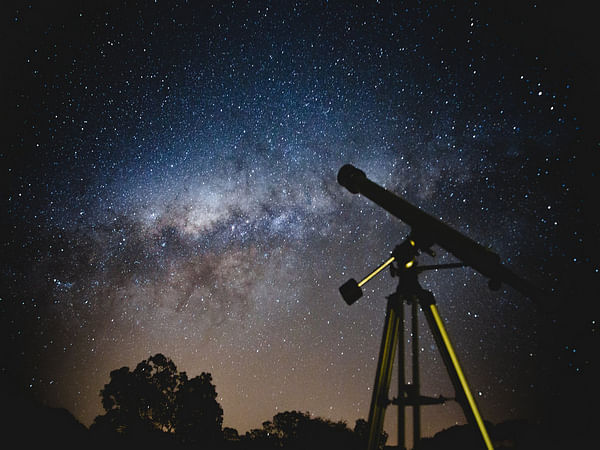Washington [US] December 6 (ANI): Researchers detail an analysis method that could improve telescopes at the Simons Observatory by evaluating their performance before installation. This is the first time the optical performance of a telescope has been confirmed prior to its deployment.
“We developed a way to use radio-holography to characterize a fully integrated cryogenic telescope instrument prior to deployment,” said research team member Grace Chesmore from the University of Chicago. “In the lab, it’s much easier to spot issues before they become problematic and manipulate the components inside the telescope to optimize performance.”
Although it is common to wait until after installation to characterize a telescope’s optical performance, it is hard to make adjustments once everything is in place. However, a full analysis typically can’t be done prior to installation because lab-based techniques are designed for room temperature analysis while telescope components are kept at cryogenic temperatures to improve sensitivity.
In the Optica Publishing Group journal Applied Optics, researchers led by the University of Chicago’s Jeff McMahon describe how they applied their new measurement approach to the Simons Observatory Large Aperture Telescope receiver optics, which includes lenses, filters, baffles and other components. This is the first time such parameters have been confirmed in the lab prior to the deployment of a new receiver.
“The Simons Observatory will create unprecedented maps of the afterglow of the Big Bang, providing an understanding of the first moments and inner workings of our universe,” said Chesmore, first author of the paper. “The observatory will help make these ultra-sensitive cosmic microwave background maps possible.”
The cosmic microwave background maps that will be produced by the Simons Observatory will provide a window into our universe at a time so early in its history that tiny signals from quantum gravity could be detectable, says Chesmore. However, probing space with such sensitivity requires a better understanding of how electromagnetic radiation travels through the telescope’s optical system and the elimination of as much scattering as possible.
In the new work, the researchers used a technique known as near-field radio holography, which can be used to reconstruct how electromagnetic radiation travels through a system such as a telescope. To do this at cryogenic temperatures they installed a detector that can map a very bright coherent source while operating at the extremely cold temperature of 4 Kelvin. This allowed them to create maps with a very high signal-to-noise ratio, which they used to make sure the Large Aperture Telescope receiver optics performed as expected.
“All objects, including lenses, shrink and exhibit changes in optical properties when they cool down,” explained Chesmore. “Operating the holography detector at 4 Kelvin allowed us to measure the optics in the shapes they will be when observing in Chile.”
After these measurements were complete, the researchers developed software to predict how the telescope would work with photons coming from space rather than the near-field source used in the laboratory.
“The software uses the near-field maps we measured to determine the behavior of a far-field microwave source,” said Chesmore. “This is only possible using radio-holography because it measures both the amplitude and phase of the microwaves, and there is a known relationship between the properties in the near- and far-field.”
Using their new approach, the researchers found that the telescope’s optics matched predictions. They were also able to identify and mitigate a source of scattering before the telescope was deployed.
The Large Aperture Telescope optical system they characterized is now on its way to Chile for installation. The Simons Observatory will include the Large Aperture Telescope as well as three Small Aperture Telescopes, which will be used together for precise and detailed observations of the cosmic microwave background. The University of Chicago researchers will continue to characterize components for the Simons Observatory telescopes and say that they look forward to using these telescopes to better understand our Universe. (ANI)
This report is auto-generated from ANI news service. ThePrint holds no responsibility for its content.



